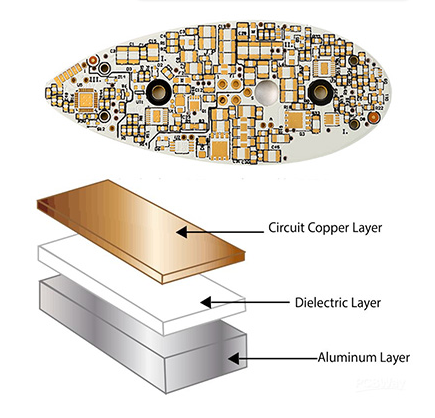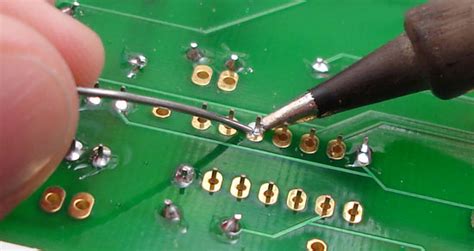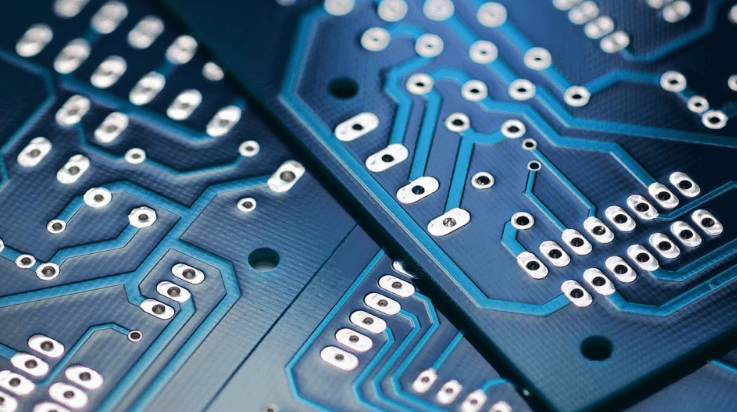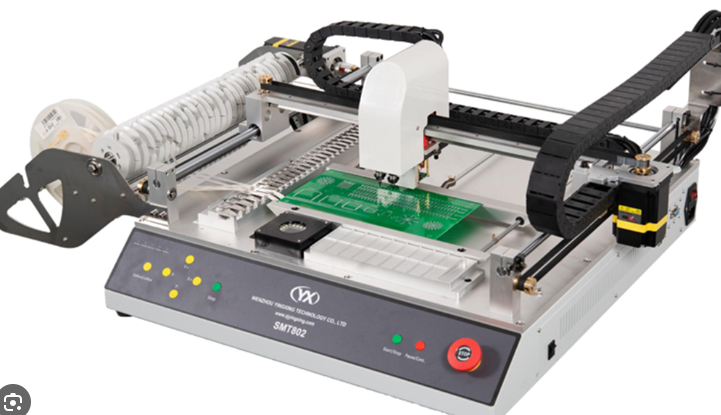Aluminum pcb via
Advantages Of Using Aluminum PCB In High-Power Applications
Aluminum PCBs, or aluminum-based printed circuit boards, have become increasingly popular in high-power applications due to their unique advantages.
These advantages stem from the inherent properties of aluminum, which make it an ideal material for managing heat and ensuring the reliability of electronic components.
One of the primary benefits of using aluminum PCBs in high-power applications is their superior thermal conductivity.
Unlike traditional FR4 PCBs, aluminum PCBs can efficiently dissipate heat away from critical components, thereby reducing the risk of overheating and extending the lifespan of the electronic device. This is particularly important in high-power applications where excessive heat generation is a common issue.
In addition to their excellent thermal management capabilities, aluminum PCBs also offer enhanced mechanical stability.
The robust nature of aluminum provides a solid foundation for the PCB, making it less prone to warping and mechanical stress. This is especially beneficial in applications that involve high levels of vibration or mechanical shock, such as automotive and industrial electronics. The increased durability of aluminum PCBs ensures that they can withstand harsh operating conditions, thereby improving the overall reliability of the electronic system.
Furthermore, aluminum PCBs are known for their lightweight nature.
Despite their strength and durability, aluminum is a relatively light material, which can be advantageous in applications where weight is a critical factor. For instance, in aerospace and portable electronic devices, reducing the weight of the components can lead to significant improvements in performance and energy efficiency. The use of aluminum PCBs can contribute to these improvements by providing a lightweight yet sturdy solution for high-power applications.
Another notable advantage of aluminum PCBs is their environmental friendliness.
Aluminum is a recyclable material, and the production process for aluminum PCBs generates less environmental waste compared to traditional PCB manufacturing methods. This makes aluminum PCBs a more sustainable choice for companies looking to reduce their environmental footprint. Additionally, the long lifespan and reliability of aluminum PCBs mean that they need to be replaced less frequently, further contributing to environmental conservation efforts.
Moreover, aluminum PCBs offer excellent electrical insulation properties.
The dielectric layer used in aluminum PCBs provides effective insulation between the conductive layers and the aluminum base, ensuring that the electrical performance of the PCB is not compromised. This is crucial in high-power applications where maintaining electrical integrity is essential for the proper functioning of the device. The combination of thermal conductivity, mechanical stability, and electrical insulation makes aluminum PCBs a versatile and reliable choice for a wide range of high-power applications.
In conclusion, the advantages of using aluminum PCBs in high-power applications are manifold.
Their superior thermal management capabilities, enhanced mechanical stability, lightweight nature, environmental friendliness, and excellent electrical insulation properties make them an ideal choice for various industries. As the demand for high-power electronic devices continues to grow, the adoption of aluminum PCBs is likely to increase, driven by their ability to improve performance, reliability, and sustainability.
By leveraging the unique properties of aluminum, manufacturers can develop more efficient and durable electronic systems that meet the rigorous demands of high-power applications.
Thermal Management Solutions With Aluminum PCB Viamaterial
Aluminum PCB viamaterial has emerged as a pivotal component in the realm of thermal management solutions, particularly in high-performance electronic applications. As electronic devices continue to shrink in size while increasing in power density, the need for efficient heat dissipation becomes ever more critical. Aluminum PCBs, or Metal Core Printed Circuit Boards (MCPCBs), offer a robust solution to this challenge by leveraging the superior thermal conductivity of aluminum.
One of the primary advantages of aluminum PCB viamaterial is its ability to effectively dissipate heat away from critical components. Traditional FR4 PCBs, made from woven glass epoxy material, often struggle to manage the thermal loads generated by modern electronic devices. In contrast, aluminum PCBs incorporate a metal core, typically aluminum, which acts as a heat sink. This metal core is sandwiched between layers of dielectric material and copper circuitry, creating a pathway for heat to be efficiently transferred away from heat-generating components.
Moreover, the use of aluminum as a core material offers several additional benefits.
Aluminum is not only an excellent conductor of heat but also lightweight and cost-effective. These attributes make it an ideal choice for applications where both thermal performance and weight are critical considerations. For instance, in the automotive and aerospace industries, where reducing weight without compromising performance is paramount, aluminum PCBs provide a compelling solution.
Furthermore, the integration of aluminum PCB viamaterial into electronic designs can significantly enhance the reliability and longevity of the devices.
Excessive heat can lead to thermal stress, which in turn can cause component failure and reduced lifespan. By efficiently managing heat, aluminum PCBs help mitigate these risks, ensuring that electronic devices operate within safe temperature ranges. This is particularly important in high-power applications such as LED lighting, power supplies, and motor controllers, where thermal management is crucial for maintaining performance and reliability.
In addition to their thermal management capabilities, aluminum PCBs also offer improved mechanical stability. The metal core provides a rigid structure that can withstand mechanical stresses and vibrations, which are common in industrial and automotive environments. This added durability further enhances the reliability of electronic devices, making aluminum PCBs a preferred choice for demanding applications.
Transitioning from traditional FR4 PCBs to aluminum PCBs may require some adjustments in the design and manufacturing processes. However, the benefits of improved thermal performance, enhanced reliability, and mechanical stability often outweigh the initial challenges. Designers must consider factors such as the thermal conductivity of the dielectric material, the thickness of the aluminum core, and the layout of the copper circuitry to optimize the thermal management capabilities of the PCB.
In conclusion, aluminum PCB viamaterial represents a significant advancement in thermal management solutions for high-performance electronic applications. By leveraging the superior thermal conductivity, lightweight nature, and cost-effectiveness of aluminum, these PCBs offer a robust solution to the challenges posed by increasing power densities and shrinking device sizes. The integration of aluminum PCBs into electronic designs not only enhances thermal performance but also improves the reliability and longevity of the devices. As the demand for high-performance, reliable electronic devices continues to grow, the adoption of aluminum PCB viamaterial is likely to become increasingly prevalent across various industries.

Comparing Aluminum PCB Viamaterial To Traditional FR4 Boards
Aluminum PCB via material has emerged as a significant advancement in the field of printed circuit boards (PCBs), offering a range of benefits that distinguish it from traditional FR4 boards.
To understand the advantages and potential applications of aluminum PCB viamaterial, it is essential to compare it with the more conventional FR4 boards, which have been the industry standard for many years.
One of the primary differences between aluminum PCB viamaterial and FR4 boards lies in their thermal conductivity.
Aluminum PCBs are known for their superior ability to dissipate heat, which is a critical factor in high-power applications. The aluminum substrate acts as a heat sink, effectively drawing heat away from the components and reducing the risk of overheating. In contrast, FR4 boards, which are made from woven fiberglass cloth with an epoxy resin binder, have relatively poor thermal conductivity. This limitation can lead to thermal management challenges, especially in applications where high power and heat generation are involved.
Moreover, the mechanical properties of aluminum PCB viamaterial offer distinct advantages over FR4 boards.
Aluminum is a robust and durable material, providing enhanced mechanical stability and resistance to physical stress. This makes aluminum PCBs particularly suitable for applications that require high reliability and durability, such as automotive, aerospace, and industrial electronics.
On the other hand, FR4 boards, while offering adequate mechanical strength for many applications, may not provide the same level of durability and resistance to mechanical stress as aluminum PCBs.
In addition to thermal and mechanical benefits, aluminum PCB viamaterial also offers improved electrical performance.
The aluminum substrate can provide a lower impedance path for electrical signals, which can enhance signal integrity and reduce electromagnetic interference (EMI). This is particularly advantageous in high-frequency applications where signal integrity is paramount. Conversely, FR4 boards, while generally sufficient for many low to moderate frequency applications, may not offer the same level of electrical performance as aluminum PCBs in high-frequency scenarios.
Another important consideration is the cost and manufacturability of aluminum PCB viamaterial compared to FR4 boards.
While aluminum PCBs can be more expensive to produce due to the cost of the raw materials and the specialized manufacturing processes required, they can offer long-term cost savings through improved performance and reliability. The enhanced thermal management capabilities of aluminum PCBs can lead to longer component lifespans and reduced maintenance costs, which can be particularly beneficial in demanding applications. In contrast, FR4 boards are generally more cost-effective to produce and are widely available, making them a popular choice for a broad range of applications where the specific advantages of aluminum PCBs are not required.
Furthermore, environmental considerations also play a role in the comparison between aluminum PCB viamaterial and FR4 boards.
Aluminum is a recyclable material, which can contribute to more sustainable manufacturing practices. The ability to recycle aluminum PCBs can help reduce electronic waste and support environmental sustainability efforts. On the other hand, FR4 boards, while also recyclable to some extent, may not offer the same level of environmental benefits as aluminum PCBs.
In conclusion, while traditional FR4 boards continue to be widely used in the electronics industry due to their cost-effectiveness and versatility, aluminum PCB viamaterial offers significant advantages in terms of thermal management, mechanical stability, electrical performance, and environmental sustainability. These benefits make aluminum PCBs an attractive option for high-power, high-reliability, and high-frequency applications, where the superior properties of aluminum can provide enhanced performance and long-term cost savings. As technology continues to advance, the adoption of aluminum PCB viamaterial is likely to increase, driven by the growing demand for more efficient and reliable electronic solutions.
Innovations In Aluminum PCB Viamaterial For LED Lighting Systems
Aluminum PCB viamaterial has emerged as a groundbreaking innovation in the realm of LED lighting systems, offering a host of advantages that significantly enhance performance and reliability.
This advancement is particularly noteworthy given the increasing demand for efficient, durable, and cost-effective lighting solutions in various applications, ranging from residential to industrial settings.
The integration of aluminum as a core material in printed circuit boards (PCBs) has revolutionized the way LED lighting systems are designed and manufactured, providing a robust platform that addresses several critical challenges.
One of the primary benefits of aluminum PCB viamaterial is its superior thermal conductivity.
LEDs generate a considerable amount of heat during operation, which, if not managed effectively, can lead to reduced lifespan and performance degradation.
Traditional PCB materials, such as FR4, often struggle to dissipate heat efficiently, resulting in hotspots and potential failure points. In contrast, aluminum PCBs excel in thermal management due to the metal’s inherent ability to conduct heat away from sensitive components. This efficient heat dissipation ensures that LEDs operate within their optimal temperature range, thereby extending their operational life and maintaining consistent performance.
Moreover, aluminum PCB viamaterial offers enhanced mechanical stability, which is crucial for the durability of LED lighting systems.
The robust nature of aluminum provides a solid foundation that can withstand physical stresses and environmental factors, such as vibrations and temperature fluctuations.
This resilience is particularly beneficial in applications where LED lighting systems are exposed to harsh conditions, such as outdoor lighting, automotive lighting, and industrial environments.
By ensuring structural integrity, aluminum PCBs contribute to the overall reliability and longevity of LED lighting systems.
In addition to thermal and mechanical advantages, aluminum PCB viamaterial also facilitates improved electrical performance.
The metal’s excellent conductivity ensures minimal electrical resistance, which is essential for the efficient operation of LEDs. This characteristic not only enhances the overall energy efficiency of the lighting system but also contributes to better light output and color consistency.
As a result, aluminum PCBs are increasingly being adopted in high-performance LED applications where precision and efficiency are paramount.
Furthermore, the use of aluminum in PCBs aligns with the growing emphasis on sustainability and environmental responsibility. Aluminum is a recyclable material, and its incorporation into PCB manufacturing supports the broader goals of reducing electronic waste and promoting eco-friendly practices. This aspect is particularly relevant in the context of LED lighting systems, which are often marketed as energy-efficient and environmentally friendly alternatives to traditional lighting solutions. By utilizing aluminum PCB viamaterial, manufacturers can further enhance the sustainability credentials of their products.
The advancements in aluminum PCB viamaterial have also led to innovations in design and manufacturing processes.
For instance, the development of multi-layer aluminum PCBs has opened new possibilities for complex and high-density LED lighting systems. These multi-layer configurations allow for more intricate circuit designs, enabling the integration of additional functionalities and features without compromising on performance or reliability. Additionally, advancements in surface treatment technologies have improved the adhesion of solder masks and other protective coatings, ensuring better protection against corrosion and wear.
In conclusion, the innovations in aluminum PCB viamaterial represent a significant leap forward in the design and performance of LED lighting systems. By addressing critical challenges related to thermal management, mechanical stability, electrical performance, and sustainability, aluminum PCBs have established themselves as a superior alternative to traditional materials. As the demand for efficient and reliable LED lighting solutions continues to grow, the adoption of aluminum PCB viamaterial is poised to play a pivotal role in shaping the future of this dynamic industry.






